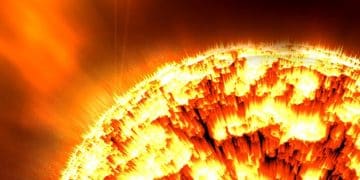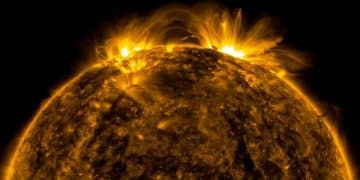Geomagnetic Storm Watch: Is Your GPS at Risk from Solar Flares?
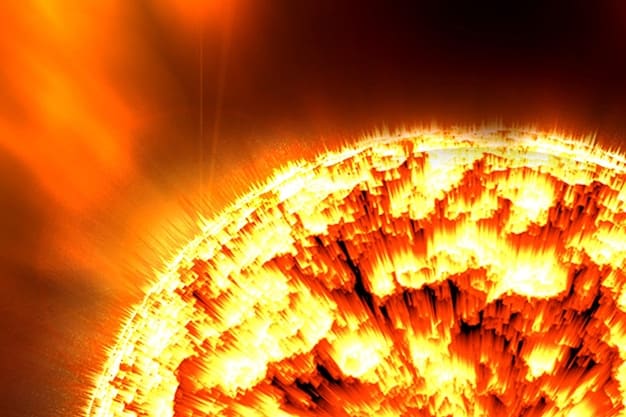
A geomagnetic storm watch is in effect due to increased solar activity, raising concerns about potential disruptions to GPS systems and other technologies reliant on satellite signals. This alert highlights the need for awareness and preparedness for the possible impacts of solar flares on our daily lives.
A **geomagnetic storm watch** has been issued, and you might be wondering what that means for your GPS and other technologies. Solar flares, powerful bursts of energy from the sun, can disrupt satellite communications, potentially impacting everything from navigation systems to power grids. Let’s explore what’s happening and how you can prepare.
Understanding Geomagnetic Storms and Solar Flares
Geomagnetic storms are disturbances in Earth’s magnetosphere caused by solar activity. These storms can have a range of effects, from creating stunning auroras to disrupting satellite communications and even affecting ground-based technologies.
What Causes Geomagnetic Storms?
Geomagnetic storms are primarily caused by solar flares and coronal mass ejections (CMEs). Solar flares are sudden releases of energy from the sun, while CMEs are large expulsions of plasma and magnetic field from the solar corona. When these events reach Earth, they interact with our planet’s magnetic field, causing disturbances.
The Impact of Solar Flares on Earth
Solar flares can impact Earth in several ways. They can disrupt radio communications, interfere with satellite signals, and even cause power grid fluctuations. The severity of these impacts depends on the intensity of the solar flare and the Earth’s magnetic field configuration at the time.
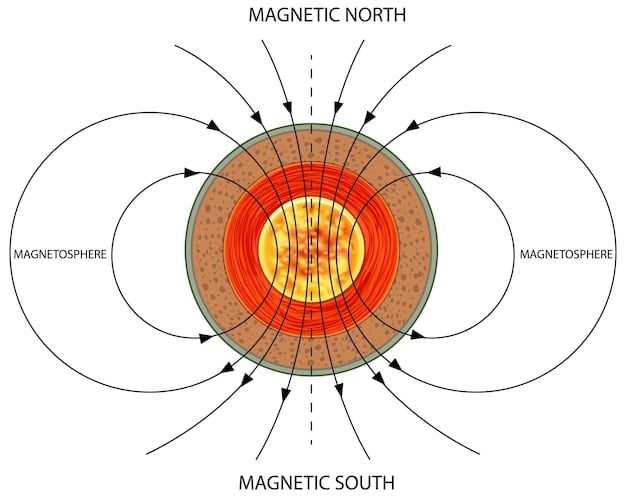
Geomagnetic storms are a natural phenomenon, understanding their causes and potential effects is crucial for disaster preparedness.
Are Solar Flares a Real Threat to GPS?
GPS systems, essential for navigation and timing, rely on signals from satellites orbiting Earth, making them susceptible to solar flares. When a solar flare occurs, the energy released can disrupt the ionosphere, impacting radio waves travelling from GPS satellites to receivers on the ground.
How Solar Flares Affect GPS Signals
Solar flares can cause signal delays, errors in positioning, and even complete signal loss. The ionosphere, a layer of the atmosphere containing ionized particles, plays a crucial role in GPS signal transmission. Solar flares can disrupt the density and structure of the ionosphere, distorting or blocking GPS signals.
Mitigating GPS Disruptions During Solar Storms
Several strategies can mitigate GPS disruptions during solar events. One approach involves using differential GPS (DGPS) techniques, which employ reference stations to correct errors in real-time. Another strategy involves using satellite-based augmentation systems (SBAS), such as the Wide Area Augmentation System (WAAS), to improve GPS accuracy and reliability.
- Utilize real-time kinematic (RTK) GPS for precise positioning.
- Rely on inertial navigation systems (INS) to maintain positioning during GPS outages.
- Implement multi-frequency GPS receivers to compensate for ionospheric delays.
It’s worth remembering that GPS is vital for various applications, from transportation to emergency services, making it essential to protect it from space weather events.
The Recent Geomagnetic Storm Watch: What to Expect
A geomagnetic storm watch has been issued due to increased solar activity, prompting concern about potential disruptions to GPS and other technologies. This alert is an advisory indicating the possibility of a geomagnetic storm impacting Earth in the near future.
Understanding the Scale of Geomagnetic Storms
Geomagnetic storms are classified on a scale from G1 (minor) to G5 (extreme), depending on their intensity. A G1 storm may cause minor power grid fluctuations and have a minimal impact on satellite operations, while a G5 storm can cause widespread power outages, disrupt satellite communications, and trigger auroras as far south as Florida and southern Texas.
Impact on Critical Infrastructure
Critical infrastructure, including power grids, communication networks, and transportation systems, can be vulnerable to severe geomagnetic storms. Power grids can experience voltage fluctuations and transformer damage, while communication networks may suffer disruptions to radio and satellite communications. Transportation systems relying on GPS for navigation can also be affected.
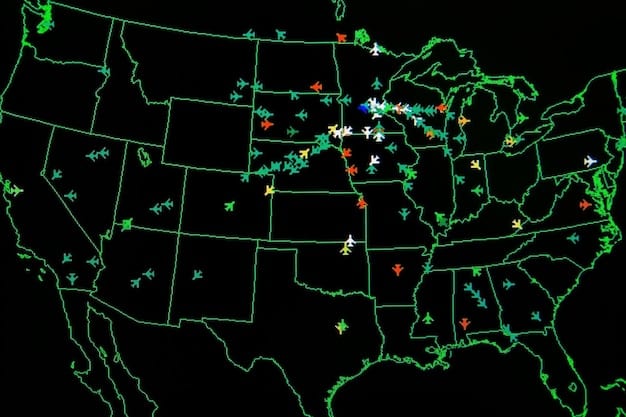
Being aware of the scale and potential impact on infrastructure will enable you to brace yourself.
How to Prepare for a Solar Flare and Geomagnetic Storm
Preparing for solar flares and geomagnetic storms involves taking proactive steps to protect your devices, secure essential resources, and minimize disruptions to your daily routine. While these events are difficult to predict, there are several measures you can take to mitigate their impact.
Protecting Your Electronics and Devices
Electronic devices are susceptible to damage from geomagnetic storms. One way to protect your electronics is by using surge protectors, which can help shield against voltage spikes caused by geomagnetic disturbances. Unplugging devices during a storm can also prevent damage from power surges.
Stocking Up on Essential Supplies
In the event of a prolonged disruption caused by a geomagnetic storm, having essential supplies on hand can be beneficial. Consider stocking up on non-perishable food, water, and medications. Having alternative sources of power, such as generators or solar chargers, can also be helpful.
Backup Communication Methods
During a geomagnetic storm, communication networks may be disrupted. The ability to communicate with others is essential during emergencies. Having backup communication methods, such as battery-powered radios or satellite phones, can help stay connected when traditional communication channels are unavailable.
- Consider investing in Faraday cages to protect electronic devices from EMP effects.
- Store important data offline on physical storage devices.
- Establish a communication plan with family members and neighbors.
The best preparation involves a comprehensive strategy to protect your devices, secure resources, and maintain communication during unforeseen events.
The Science Behind Space Weather Forecasting
Space weather forecasting involves monitoring solar activity and predicting its potential impact on Earth. Scientists use various tools and techniques to track solar flares, coronal mass ejections, and other space weather phenomena.
Tracking Solar Activity
Space-based observatories, such as NASA’s Solar Dynamics Observatory (SDO) and the ESA/NASA Solar and Heliospheric Observatory (SOHO), provide continuous monitoring of the sun’s surface and atmosphere. These observatories capture images and data across a range of wavelengths, allowing scientists to track solar flares, sunspots, and other indicators of solar activity.
Data Analysis and Modeling
Scientists use sophisticated computer models to simulate the propagation of solar flares and CMEs through the solar system and their interaction with Earth’s magnetosphere. These models incorporate data from space-based observatories and ground-based sensors to provide forecasts of geomagnetic storm intensity and timing.
Limitations and Uncertainties
Space weather forecasting is still an evolving field, and there are limitations and uncertainties inherent in the process. Predicting the exact timing and intensity of solar flares and CMEs remains challenging due to the complexity of the sun’s behavior and the dynamic nature of space weather phenomena.
Advancements in space weather forecasting are crucial for mitigating the impacts of solar activity on our increasingly technology-dependent society.
Staying Informed: Resources for Tracking Solar Activity
Staying informed about current solar activity and geomagnetic storm watches is essential for preparedness. Several resources provide real-time updates and forecasts of space weather conditions.
Official Space Weather Agencies
The Space Weather Prediction Center (SWPC), a division of the National Oceanic and Atmospheric Administration (NOAA), is the primary source for space weather forecasts and alerts in the United States. SWPC provides real-time data, forecasts, and warnings of geomagnetic storms, solar flares, and other space weather phenomena.
Online Resources and Apps
Several online resources and mobile apps provide access to space weather data and forecasts. Websites such as SpaceWeatherLive and apps like SpaceWeather offer real-time monitoring of solar activity, geomagnetic indices, and aurora forecasts.
By leveraging these resources, you can stay informed about potential space weather threats and take timely action to prepare for their impact.
| Key Point | Brief Description |
|---|---|
| ⚠️ Geomagnetic Storms | Disturbances in Earth’s magnetosphere caused by solar activity. |
| 🛰️ GPS Impact | Solar flares can disrupt GPS signals, causing delays and errors. |
| ⚡ Preparation Tips | Protect electronics, stock supplies, and have backup communication. |
| 🔭 Space Weather Forecasts | Monitor official sources like SWPC and online resources for updates. |
Frequently Asked Questions
▼
A geomagnetic storm is a disturbance of the Earth’s magnetosphere caused by solar activity. These storms can result from solar flares or coronal mass ejections that interact with our planet’s magnetic field, potentially impacting various technologies.
▼
Solar flares emit electromagnetic radiation and charged particles that can disrupt the ionosphere, a layer of the atmosphere that GPS signals pass through. This disruption can cause signal delays, errors in positioning, or even complete signal loss.
▼
A geomagnetic storm watch is an alert issued by space weather agencies like NOAA’s SWPC, indicating that conditions are favorable for a geomagnetic storm. It serves as a heads-up so individuals and industries can prepare for potential disruptions.
▼
To protect your electronics, use surge protectors to guard against voltage spikes. Unplugging devices can also prevent damage. Devices can also be stored and protected in a Faraday cage, which will shield from extreme voltage spikes.
▼
Reliable information can be found at the NOAA’s Space Weather Prediction Center (SWPC) website, SpaceWeatherLive, and through space weather apps that provide real-time monitoring of solar activity, geomagnetic indices, and aurora forecasts.
Conclusion
As we navigate an increasingly interconnected world reliant on technology, understanding and preparing for the impacts of space weather events like geomagnetic storms and solar flares is more crucial than ever. By staying informed, taking proactive measures to protect our devices and infrastructure, and supporting continued research in space weather forecasting, we can minimize the disruptions caused by these natural phenomena and ensure the resilience of our society in the face of cosmic challenges.
